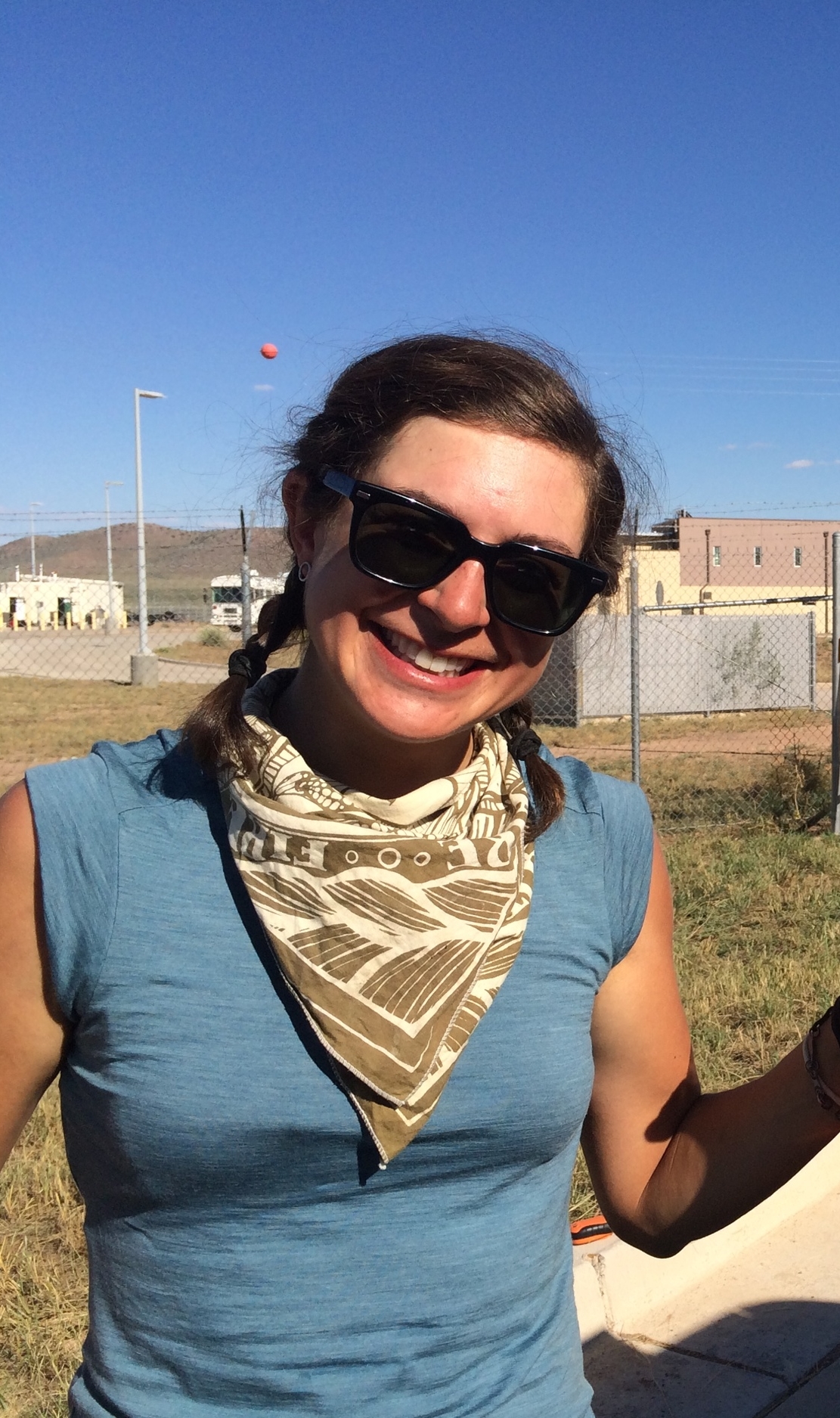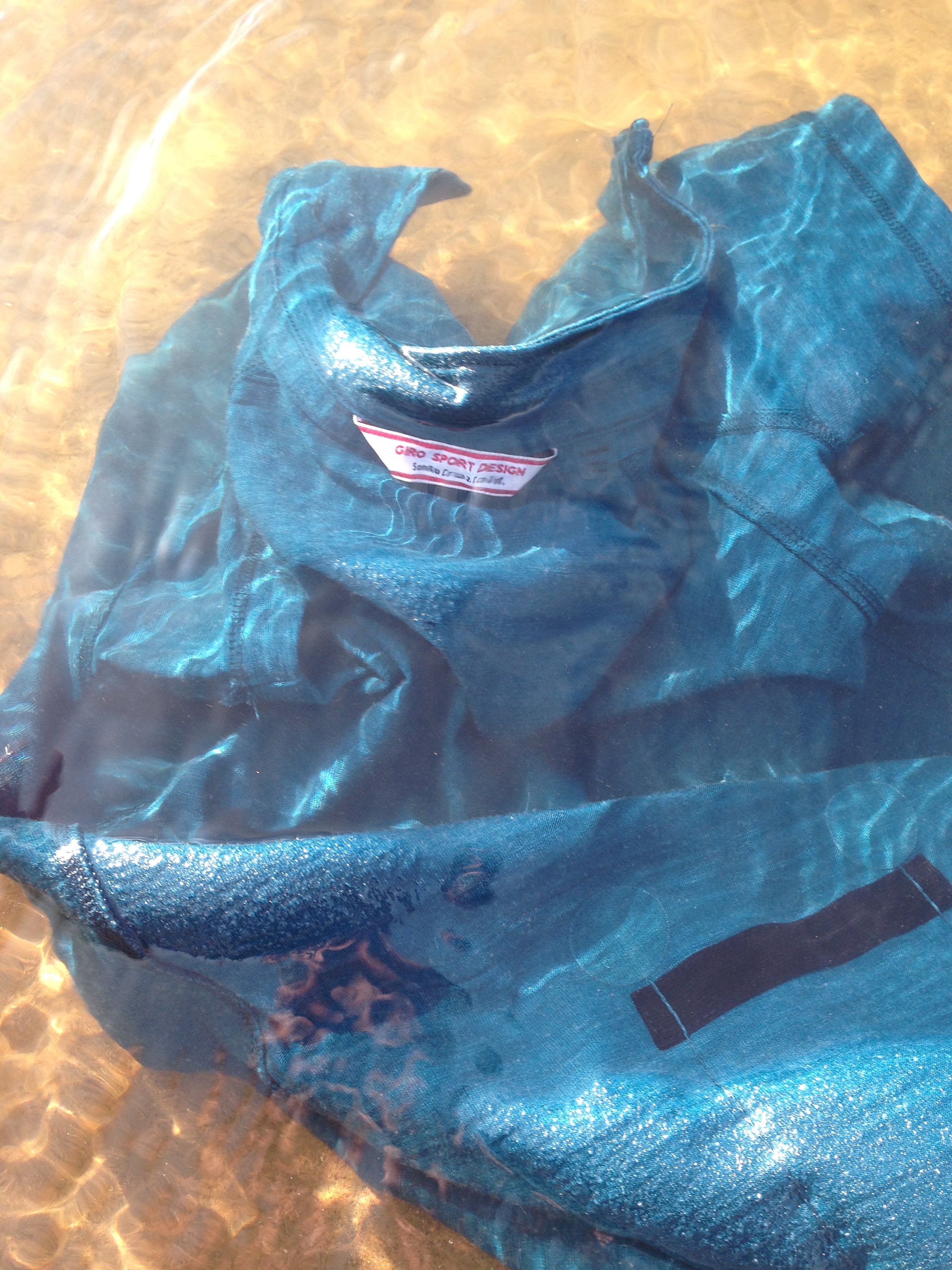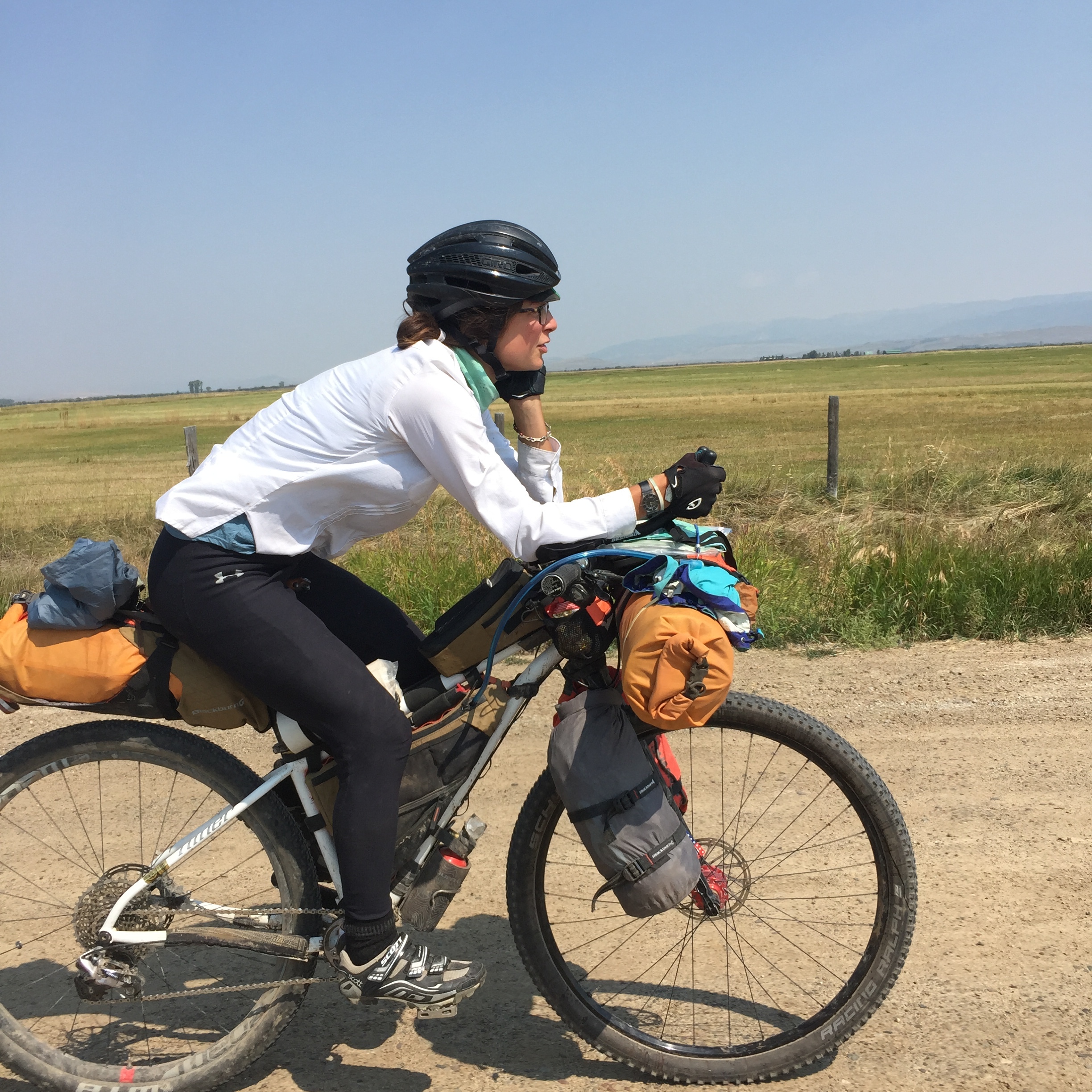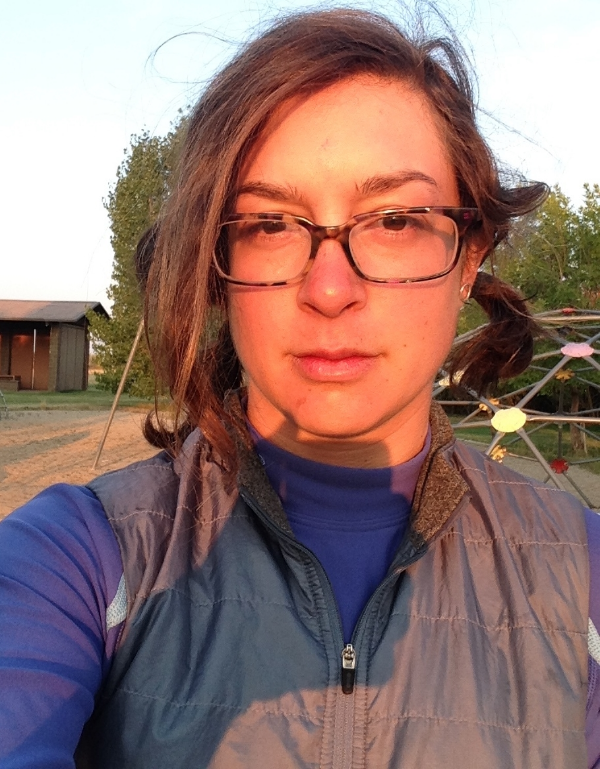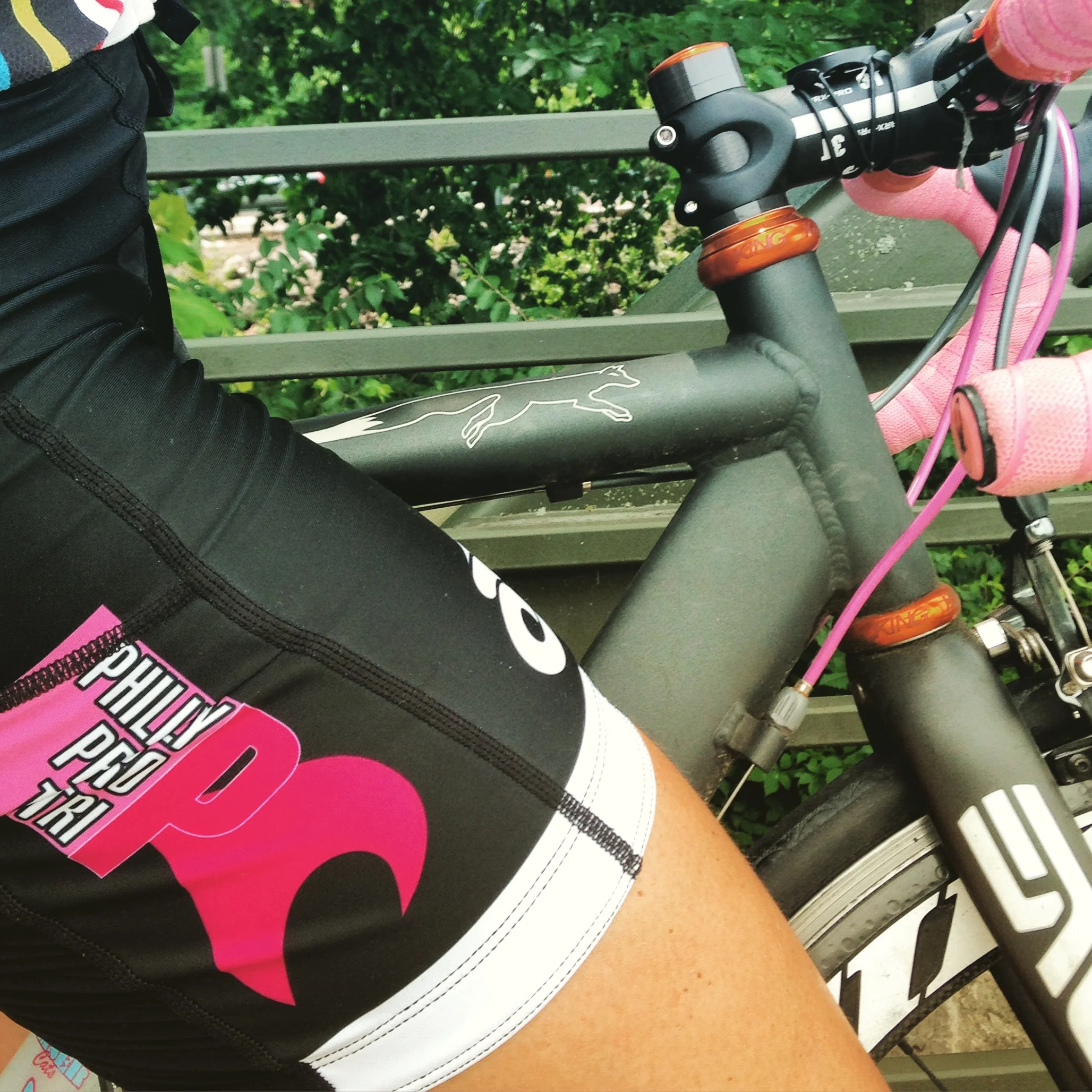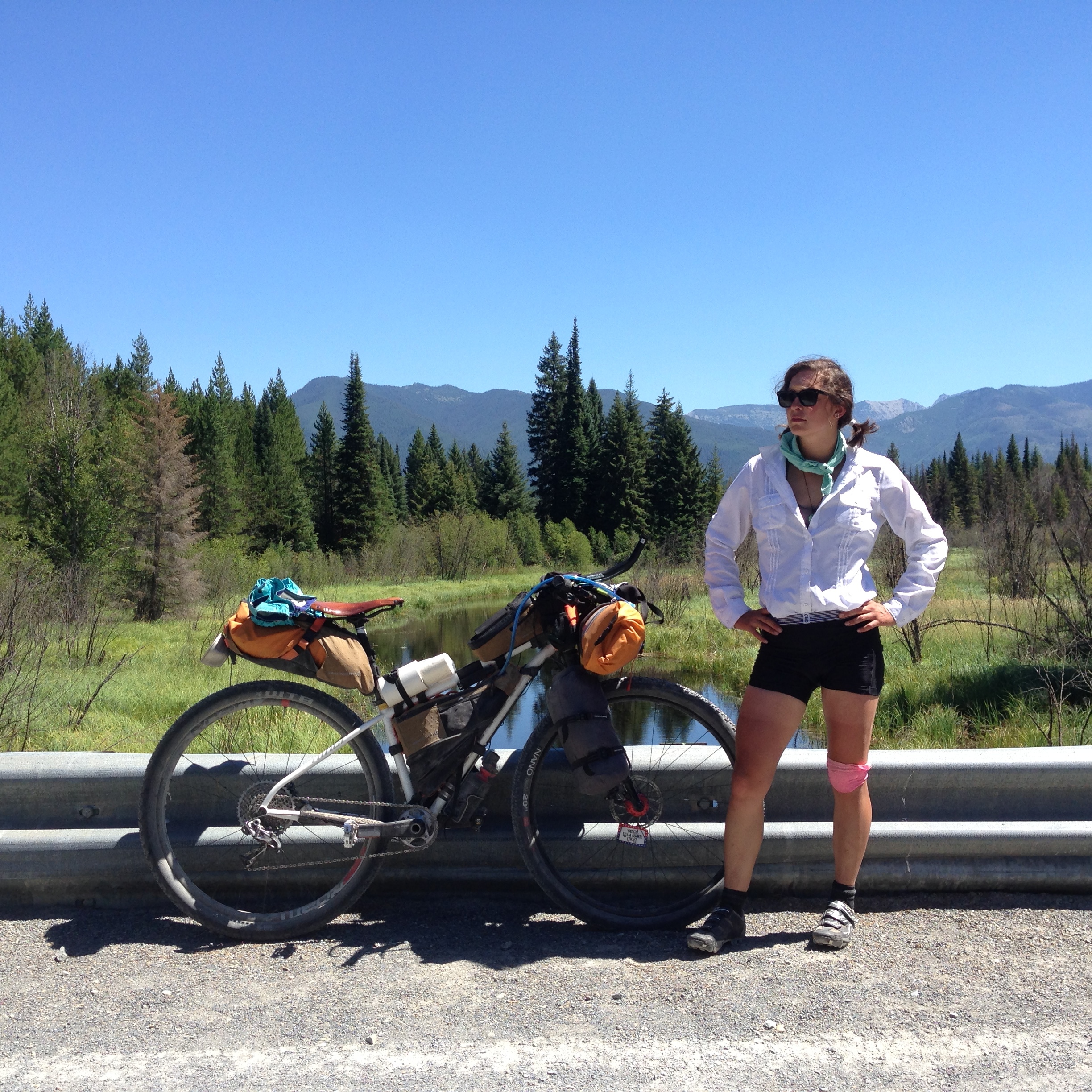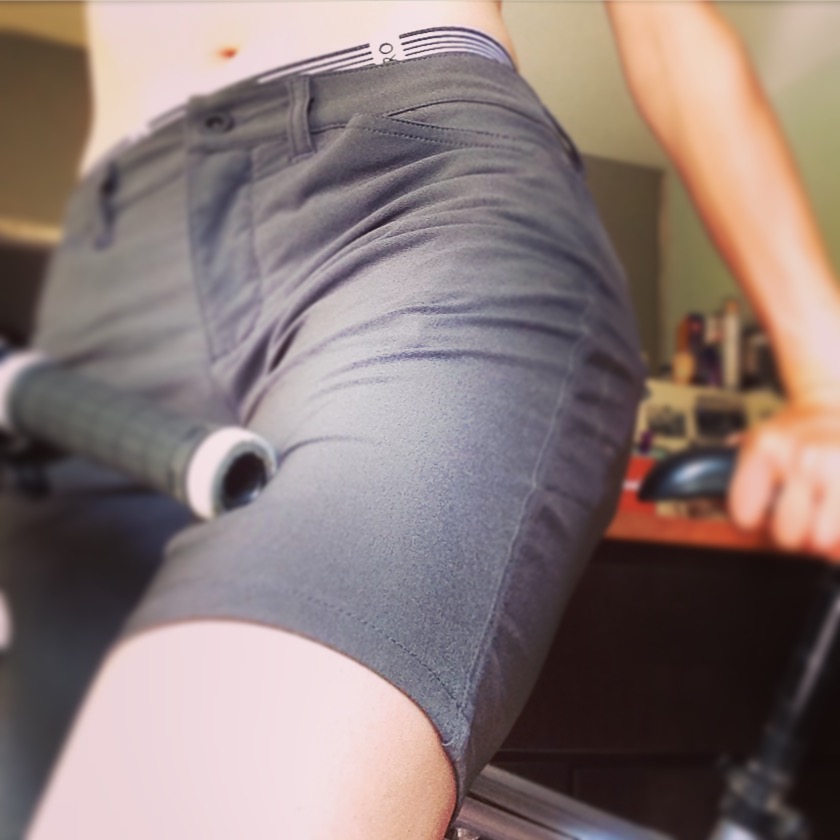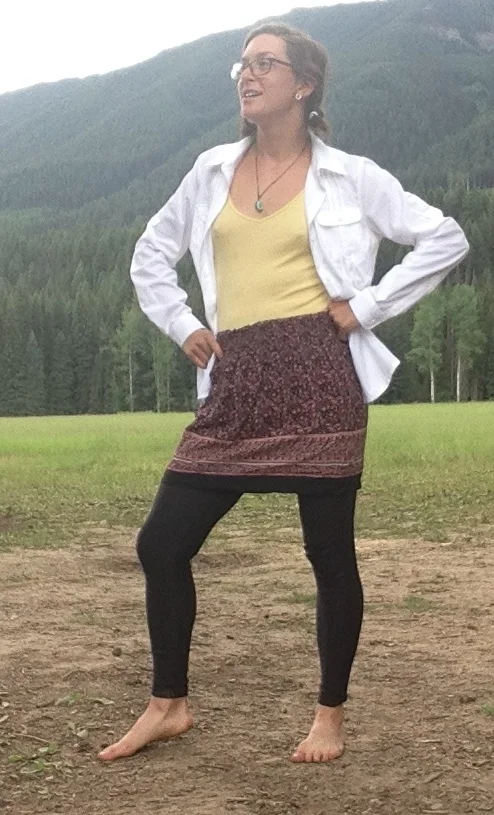What Worked and What Didn't - Apparel
/Apparel and accessories sounds far too fancy for the Divide. I really just mean “all the things that touch your body, including shoes”.
If you're not into detail, here's the photo overview of my complete wardrobe at the end of 2,800 miles:
Row 1 (from top): Giro insulated vest, lightweight tank, Columbia button-down, UnderArmour base layer, Icebreaker wool leggings
Row 2: Giro wool cycling jersey, sleeveless and sleeved, Triathlon riding shorts, Giro Undershorts, Giro Overshorts
Row 3: Bandana, Injinji socks, Darn Tough Socks, Scott Ladies MTB cycling shoe, Luna Sandals, Rohan Cycling arm warmers, Lululemon bra, Icebreaker wool bra, Smart Wool Underwear, Woolrich t-shirt, thriftstore skirt, knit cap, Montbell ball cap
There are people on the trail that have one set of riding clothes and one set of camp clothes, no more. This is totally do-able. You just need to ask yourself if you’re the kind of person that doesn’t mind wearing the same bottoms every day or wearing your rain gear while you do laundry every week and a half.
I also met people who had lots of clothing. Like, a set of camp clothes that included sweat pants and a hoodie. These people were usually traveling with panniers and racks. (Note: I witnessed almost all of my pannier-friends conclude that they’d ditch the panniers and racks in favor of soft bags if they could do it again.)
I fell somewhere in between. I could’ve slimmed down my wardrobe, but I also utilized everything.
First. Wool is awesome. Use it whenever you can.
To get this out of the way… wool solves many problems that you’d encounter on a multi-day voyage. I elaborate a little bit on wool in this post. To summarize, it REALLY does wick sweat, it naturally has anti-odor properties, and dries quickly. That jersey that you wore for the past three days? You can wear it again today without dry heaving on your own smell. Recognize wool. Apply it wherever possible.
Clothing - Tops
What worked: lightweight wool, alternating sleeve length
What didn't work: spandex jerseys
Main take-aways: 1. WOOL. 2. Alternate sleeve length to minimize sun burn (read: ugly tan lines).
Cycling Jerseys - CA Ride Jersey
I had two designated tops for cycling. Both wool, both by Giro, one was a short sleeved full-zip jersey and the other a pull-over sleeveless. The fit was great on both and I loved the colors. They helped me regulate body temperature in the heat and in the cold.
Lightweight long-sleeve button-down
Party on the bike, business in town. My favorite OTHER top to wear was the Columbia SPF 40 long sleeve, lightweight button down. I probably could’ve gotten a color other than white. It provided protection against the relentless sun without suffering the heat. It also worked as a great shirt for going to dinner in a town. Sometimes it felt good to not look haggard.
I know you’re like, isn’t every shirt like, SPF 100? I can tell you that I’ve worn non-techie, super light long sleeve shirts, and I’ve gotten burned. Use your common sense. If you can see your belly-button through it, you can probably get burned through it.
Super lightweight tank top
This was another top I threw in the cycling mix when it was extra hot outside and I felt like I could afford to bare my arms. (E.g., after a day of wearing the long sleeved shirt.) Sometimes it was so hot that it felt best to wear a shirt that basically wasn’t there. This one was breezy, almost see-thru, and a racerback. Also good for out at a bar. ‘Nuff said?
Long Sleeve Base Layer
I brought an old favorite, my blue UnderArmour warm long sleeve base layer. It was usually my sleeping shirt. No complaints except for the smell in the armpit area. Wool would've been better.
Rain Jacket
This is a crucial piece in the wardrobe. Adding a water proof shell on top of layered shirts is a great way to mimic a warm jacket without actually brining one. I wore this in the cold mornings; I even wore it to sleep a few times when the temps dipped below 38.
Insulated Vest
To help with the layering, I also had a very lightweight, insulated vest from Giro. I actually wore it a lot in the bleary-eyed mornings, to bed, and when it was below 45.
This was a bleary-eyed morning... (halfway through the Wyoming Basin, waking up in Wamsutter's park)
Mid-weight arm warmers
Continuing with the alternating sleeve length theory, I wore arm warmers on days that were mild. I didn’t get anything particularly fancy, although I know wool would’ve been better. I wore my cycling team’s warmers, because they’re dope. In a road chode sort of way.
Regular ol t-shirt (not pictured) I exclusively wore this when I was doing laundry in town. I probably could’ve done without this, but it was nice to have.
What Didn't Work: Life experience told me that my spandex jerseys smelled after one ride and were generally lame for being in the wilderness. I left them in my “bike kits” drawer at home.
Clothing - Bottoms
What Worked: Alternating cycling shorts according to chamois thickness
What Didn't Work: Overshorts
The main take-aways here are: 1. Alternate style of chamois to avoid irritation in the same spots. 2. Keep short lengths the same to maximize sexy tan lines.
Riding Shorts
One pair lightweight/ tri spandex riding short and one pair of thick cycling shorts made up the rotating riding attire. I was given Giro’s Undershorts (they were the thick chamois), and I brought a newer pair of shorts that are intended for triathletes.
I found that since the chamois were totally different, it gave any hotspots a chance to heal the next day. The Giro Undershorts (first and third picture below) came with Overshorts, but when worn together, there was just too much material. Hot and bunched, I often rocked the Undershorts by themselves. Sometimes with the white button-down. I got some strange looks, but I think they were just jealous.
Disclaimer: Okay okay okay, I don’t claim to know everyone’s butt. If you don’t want to wear a chamois on the trail, you don’t have to. Take heed that the happiness of your taint has a LOT to do with your saddle. Many people (especially men) using Brooks saddles often didn’t wear shorts with a chamois. I personally rode a Selle Anatomica (see review here), and wanted some extra cushion.
Camp Pants/Shorts
I’m a spandex girl when it comes to hiking and camping. I dig the fact that I can stretch, hang out, and sleep in the same pant-jawn… they’re really comfortable. I started the trip with an old pair of UnderArmor pants. Halfway through, I switched to mid-weight wool tights from Icebreaker. (They're awesome!) They didn’t stretch or hold the same thigh-tight shape as the spandex, but they were definitely less smelly. Hooray for that.
Since they weren’t great for long hauls on the bike, I ended up wearing the Giro Overshorts in camp or town. When it was really cold at night, I wore them in addition to the leggings. As casual shorts, they’re awesome. Just enough stretch, durable, ample pocked room including a little zipper side pocket.
Skirt!
I just brought one, weighing a few ounces and compressing to almost nothing, I really liked having this to wear off the bike. Sometimes you gotta get your chick on… or let the breeze in. You know, live a little.
Shoes, Gloves, Socks, Hats, and Underwear
Shoes
I wore Scott Women's Mountain Bike shoe. They have a recessed area for clips and durable treads around the cleat area. They also have a lot of mesh, which is great for keeping your foot less smelly and cool. They held up GREAT. I still can't believe I cycled the entire divide and didn't have a problem with them. I'm still using them.
The only other pair of footwear I brought were DIY Luna Sandals. I've been a big fan of Luna for a while, and I liked having something else to wear in town and - at times - around camp. You could probably do without an extra shoe though.
Socks
Darn Tough Socks were the only pair of socks through which I didn't wear a hole. I saved my Injinji wool toe socks for nighttime use.
Hats
I started out with a cycling cap. I found that it was practically useless in terms of shading my face from the sun and rain. Halfway through, I switched to a lightweight ball cap. It was SUPER dorky with my helmet, but it got the job done. I also bought a knit cap in Colorado. The nights were cold, and wearing a hat helped a lot.
Underwear
I had one pair of Smart Wool boyshorts underwear, one sports bra from Icebreaker, and one yoga-style bra from Lululemon. I started out with 3 pairs of underwear, but found I only ever wore one pair per week. Cycling shorts and commando were the preferred methods on the trail. I hope this doesn't shock you.
Gloves
The only gloves I wore consistently were my Giro half-finger gloves. They had a bit of padding, which was nice on the washboard, and they actually provided some warmth on cold mornings. I carried a pair of mid-weight full-finger gloves for most of my trip before realizing they were a waste of space. Bottom line: For moderately mild-weathered trips, just suck it up for the few times your hands are cold and leave the warm gloves at home.
That's it. That's all. Somehow, it all fit on my bike. If I had to slim down, I would ditch the extra t-shirt, sleeveless riding jersey, and trade the UnderArmour base layer in favor of something wool.



